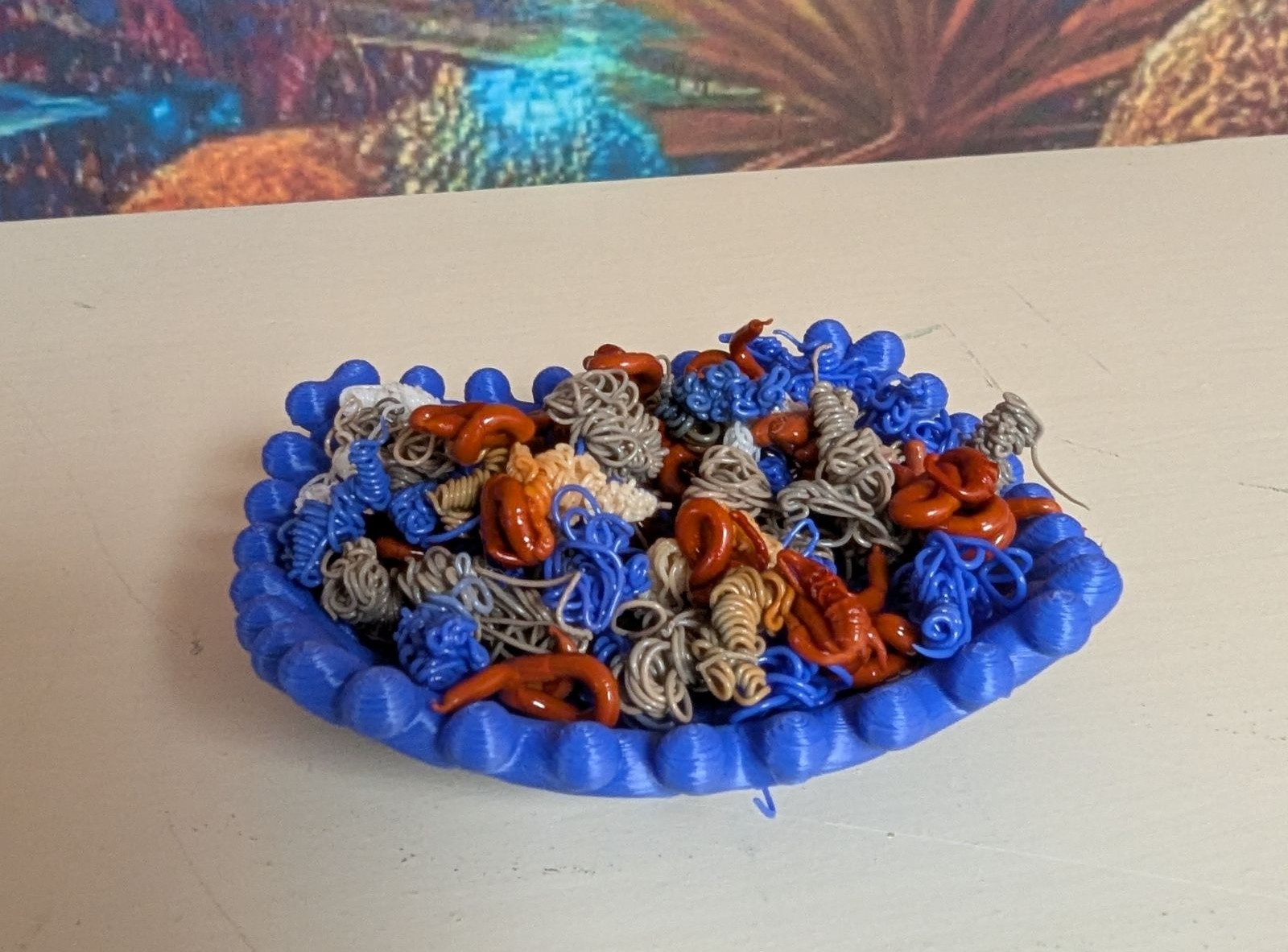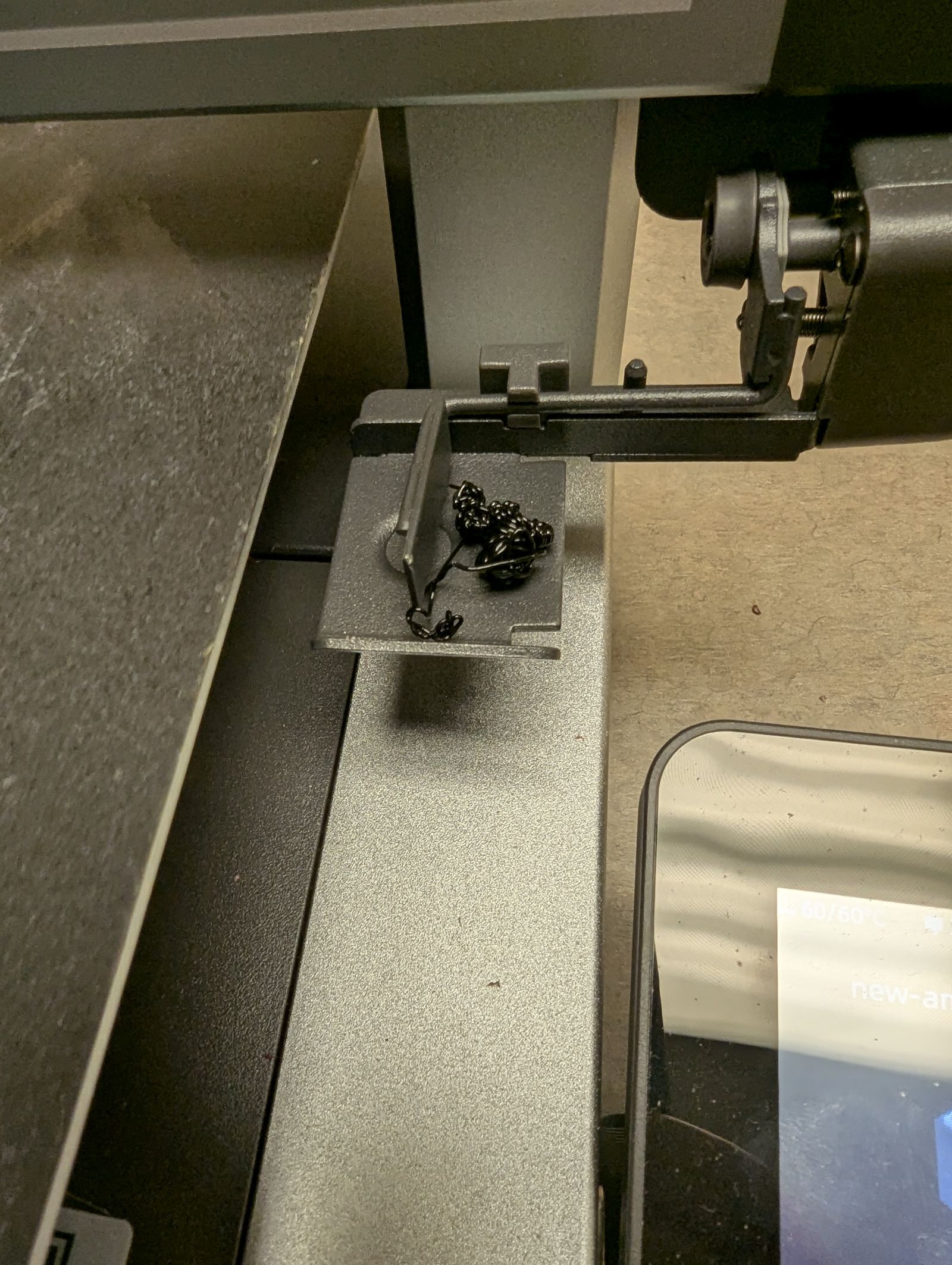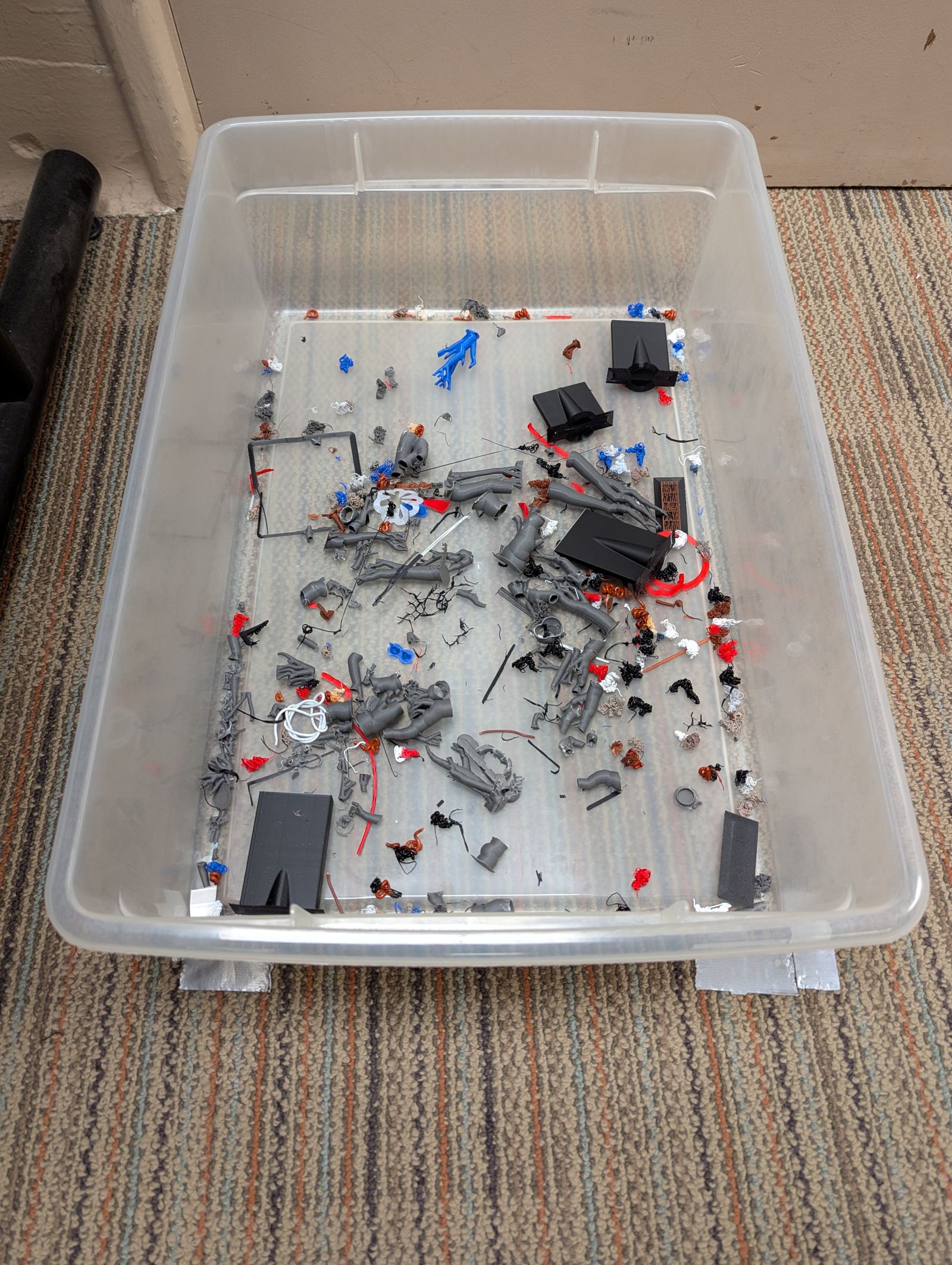Weird Coils Shot Into the Air
At first glance, 3D printing appears to make something out of nothing. But of course, that’s the not the case at all. Our 3D models are printed using a material called polylactic acid, PLA for short. To explain a little more about this material, we will take you on a journey that starts in the discard pile.
If you watch the Anycubic Kobra 3 start a print job, you’ll experience the unexpected launch of a blob from a little tray on its right side. Before laying filament down on the build plate, the printer tests the filament to make sure its speed and composition matches the programming in the print file. The test material then gets discarded. But we decided to keep it as a way to start the conversation about the material used to make 3D prints.
What is the material used to build 3D printed models?

There is a big world of 3D printing out there. Although a very wide range of materials get used for 3D printing across all kinds of settings, from industrial products to home hobbyists. Polylactic acid, known as PLA, remains the most common material for beginners. As a particular variety of plastic polymer, PLA heats and cools very rapidly, allowing for the melted bits to become laid down by the print nozzle and then cool very quickly to become solid. Made from biodegradable ingredients such as cornstarch and tapioca roots, PLA offers an excellent alternative to petroleum based plastics.
Why does has the printer generated a bunch of weird coils?

Before starting a print, the printer runs a test of filament extrusion: the pushing through of the melted-hot filament by the nozzle. This clears out any buildup from the last print and ensures that when the printing begins the filament extrusion proceeds smoothly. The test extrusion generates a bit of extra filament and our printer has a spring-loaded mechanism to shoot off that material.
Why are we keeping all that filament?

We are keeping the filament from extrusion tests and support material because PLA we will send it off to a company that recycles it.
Want to know more details about PLA?
Watch this video for a full explanation of polylactic acid, PLA.